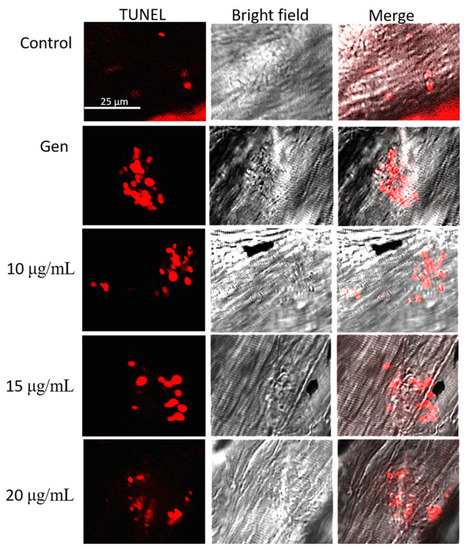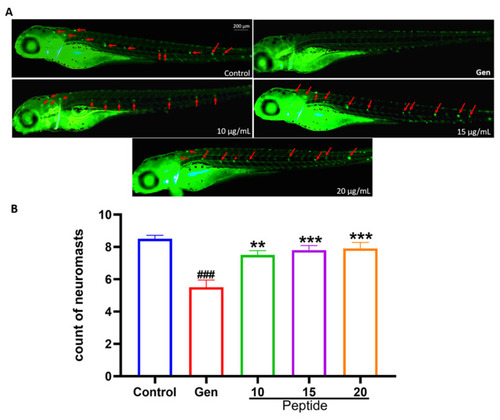- Title
-
Protective Effect of Marine Peptide from Netunea arthritica cumingii Against Gentamicin-Induced Hair Cell Damage in Zebrafish
- Authors
- Zheng, H., Zhu, R., Zhang, Y., Liu, K., Xia, Q., Li, P., Sun, X., Sun, C., Zhang, S.
- Source
- Full text @ Mar. Drugs
|
Effect of the peptide on Gen-induced hair cell loss. ( |
|
Restorative effect of the peptide on defects in the ultrastructure of hair cells. The red arrow indicates the kinocilia of hair cells; the red asterisk indicates the stereocilia of hair cells. |
|
Effects of the peptide on entry of Gen and function of the MET channel in hair cells. ( |
|
Inhibition of the peptide on ROS accumulation in hair cells. ROS in hair cells were labeled by fluorescence (white arrows). ( |
|
Inhibition of the peptide on apoptosis in hair cells. Apoptotic hair cells were stained with red fluorescence (scale bar = 25 μm). |
|
Effect of the peptide on mPTP in hair cells. ( |
|
Transcriptional alterations of genes. The amount of gene expression is exhibited as the relative expression. Compared with the control group, ## |
|
The proposed mechanism underlying the protective effect of the peptide from |








